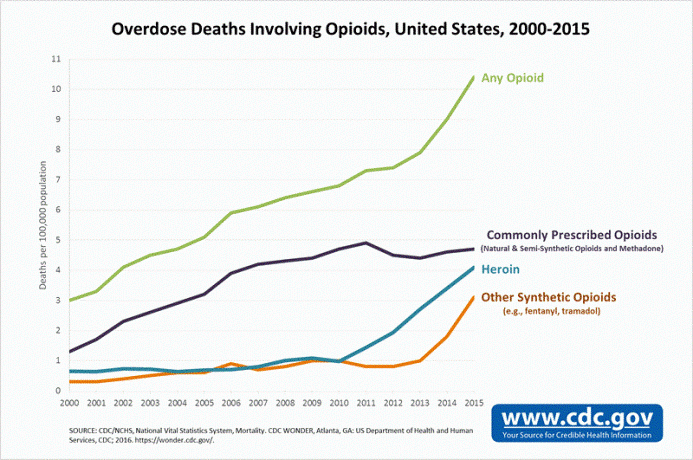Doctors’ Prescriptions Remain Key Driver Behind Opiate Addiction – OpEd
By MISES
By Mark Thornton*
Dr. Sally Satel argues in an Op-ed for Politico that the narrative that medical doctors and pharmaceutical drug producers and distributors have caused the Opioid crisis is false. She finds that “contrary to popular belief, it is rarely the people for whom they are prescribed. Most lives do not come undone, let alone end in overdose, after analgesia for a broken leg or a trip to the dentist.”
Her argument would appear to be supported by the abundance of evidence and research in her article. That appearance is deceiving. Her article is a textbook example of how the “facts” can be used to mislead.
Dr. Satel, who is a practicing addiction psychiatrist at a Washington methadone clinic, concludes that “we cannot rely on doctors or pill control policies alone to be able to fix the opioid crisis.” Her recommendations “deserve vastly more political will and federal funding than they have received.” According to Satel, “two of the most necessary steps, in my view, are making better use of anti-addiction medications and building a better addiction treatment infrastructure.” (Emphasis added) This would appear to reveal a naked and narrow self-interest of her methadone clinic, but that is unlikely to be her true motivation here.
For Dr. Satel the Opioid crisis is the fivefold increase in Opioid overdose deaths since 1999. However, she considers the idea that “the epidemic is driven by patients becoming addicted to doctor-prescribed opioids” to be a myth even though it has become “a media staple and a plank in nationwide litigation against drugmakers.”
She does admit that the number of Opioid prescription increased markedly from the mid-1990s to 2011 and that some people were addicted by those prescriptions. However, she counters that it is only a small minority and that “those who do become addicted and who die from painkiller overdoses tend to obtain these medications from sources other than their own physicians. Within the past several years, overdose deaths are overwhelmingly attributable not to prescription opioids, but to illicit Fentanyl and heroin.”
But those “facts” do not undermine the “narrative.” They support it. The number of Opioid prescriptions increased until curbs were instituted in 2011 and then the number of deaths from prescriptions leveled off and overdose deaths from street drugs skyrocketed.
It is clear that the population of addicts exploded with the vast expansion of opioid prescriptions and when addicts get cut off from prescription opiates they often turn to black market heroin and fentanyl, which greatly increases the potential for overdose. The graph below also indicates that the number of overdose deaths from prescription drugs is still more than 15,000 per year and the overall death rate accelerated through 2015.
Dr. Satel argues that the rate of addiction is extremely low and is often estimated to be less than 2%. This figure is based on an adult population of over 250 million of which 87 million used some form of Opioid prescription in 2016. The result is that approximately 1,600,000 people developed some form of “pain reliever use disorder.” That is a huge number.
What lies behind this very low “rate” of addiction could be largely the result of people being prescribed a very small number of pills (good doctors) or patients taking only a few, or none, of the pills (smart patients). Common sense would suggest that the more pills you take the more likely you are to become addicted.
Dr. Satel suggests that overdose deaths also often involve other medical problems and the use of other drugs, such as alcohol. She suggests that prescribed opiate drugs are also part of the problem because they are often “diverted” into the black market. This is all true and informative, but these are post-prescribing problems, that is, they are problems that develop after a doctor has prescribed opiates in the first place.
None of Dr. Satel’s arguments and evidence undermines the narrative that doctor-prescribed opiates caused the Opioid Crisis. In fact, properly understood, her evidence supports that narrative.
About the author:
*Mark Thornton is a Senior Fellow at the Mises Institute and the book review editor of the Quarterly Journal of Austrian Economics. He has authored seven books and is a frequent guest on national radio shows.
Source:
This article was published by the MISES Institute


